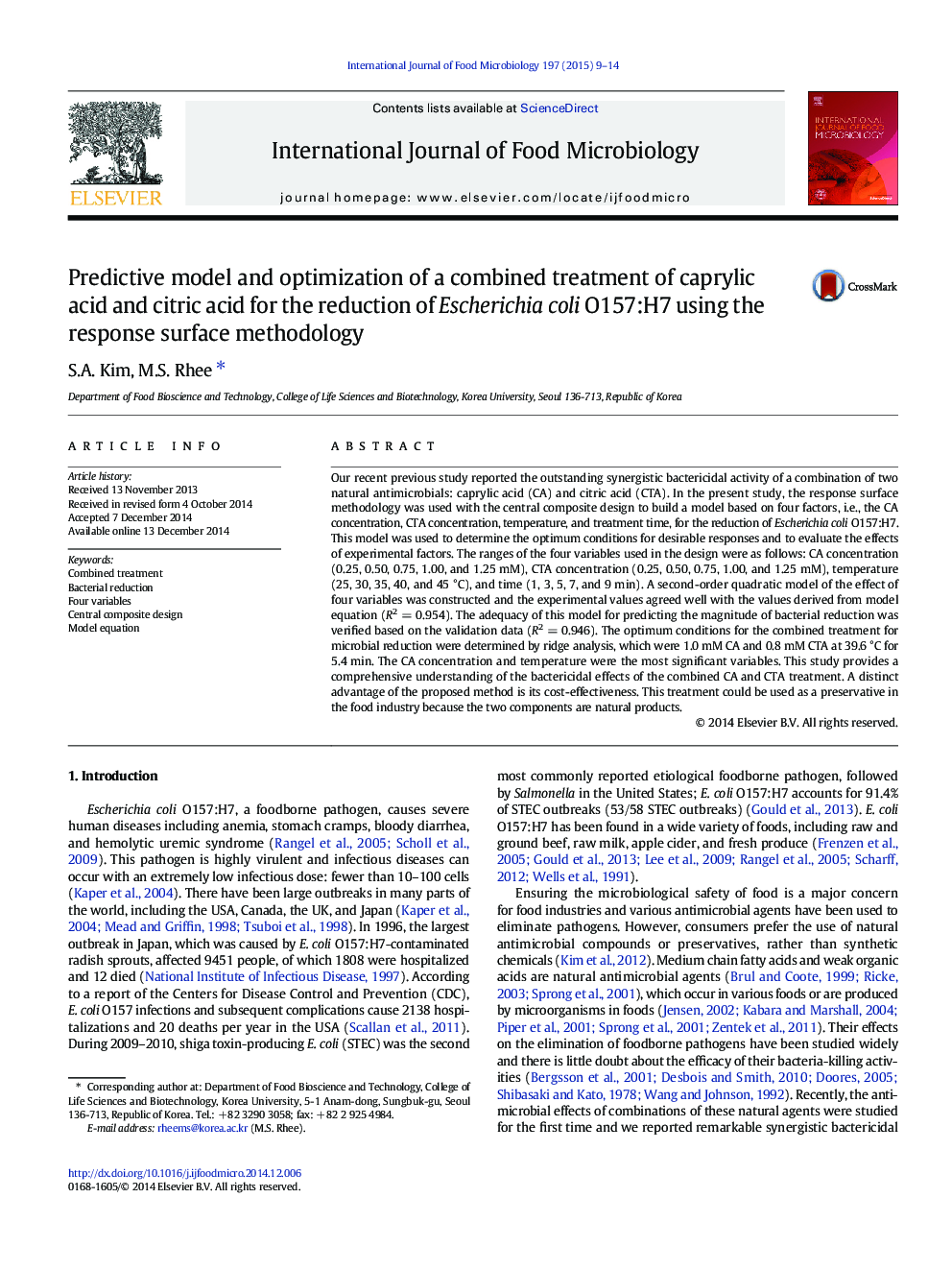| کد مقاله | کد نشریه | سال انتشار | مقاله انگلیسی | نسخه تمام متن |
|---|---|---|---|---|
| 4366667 | 1616586 | 2015 | 6 صفحه PDF | دانلود رایگان |

• Caprylic acid combined with citric acid at a mild heating temperature had highly enhanced bactericidal effects.
• The response surface methodology was used to model the effects of four variables on bacterial reduction.
• A second–order quadratic model was built and the values obtained from the equations agreed well with the experimental values.
• The optimum conditions were 1.0 mM caprylic acid and 0.8 mM citric acid at 39.6 °C for 5.4 min.
Our recent previous study reported the outstanding synergistic bactericidal activity of a combination of two natural antimicrobials: caprylic acid (CA) and citric acid (CTA). In the present study, the response surface methodology was used with the central composite design to build a model based on four factors, i.e., the CA concentration, CTA concentration, temperature, and treatment time, for the reduction of Escherichia coli O157:H7. This model was used to determine the optimum conditions for desirable responses and to evaluate the effects of experimental factors. The ranges of the four variables used in the design were as follows: CA concentration (0.25, 0.50, 0.75, 1.00, and 1.25 mM), CTA concentration (0.25, 0.50, 0.75, 1.00, and 1.25 mM), temperature (25, 30, 35, 40, and 45 °C), and time (1, 3, 5, 7, and 9 min). A second-order quadratic model of the effect of four variables was constructed and the experimental values agreed well with the values derived from model equation (R2 = 0.954). The adequacy of this model for predicting the magnitude of bacterial reduction was verified based on the validation data (R2 = 0.946). The optimum conditions for the combined treatment for microbial reduction were determined by ridge analysis, which were 1.0 mM CA and 0.8 mM CTA at 39.6 °C for 5.4 min. The CA concentration and temperature were the most significant variables. This study provides a comprehensive understanding of the bactericidal effects of the combined CA and CTA treatment. A distinct advantage of the proposed method is its cost-effectiveness. This treatment could be used as a preservative in the food industry because the two components are natural products.
Journal: International Journal of Food Microbiology - Volume 197, 16 March 2015, Pages 9–14